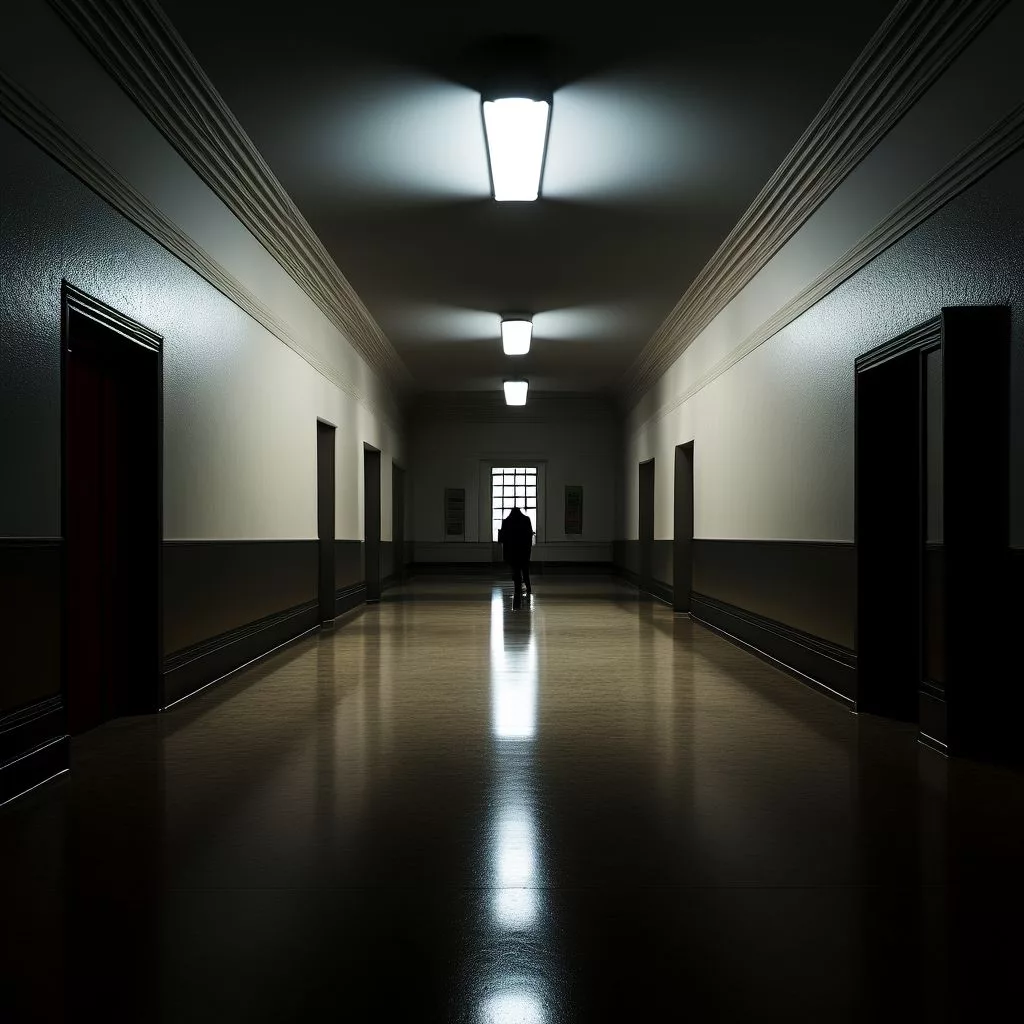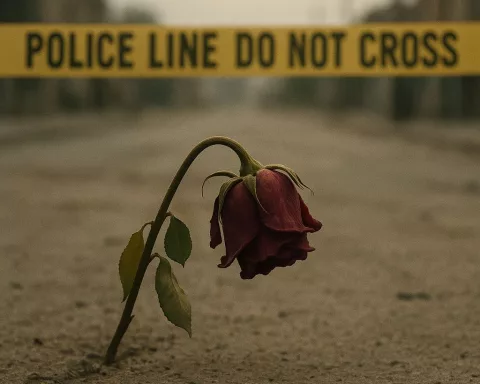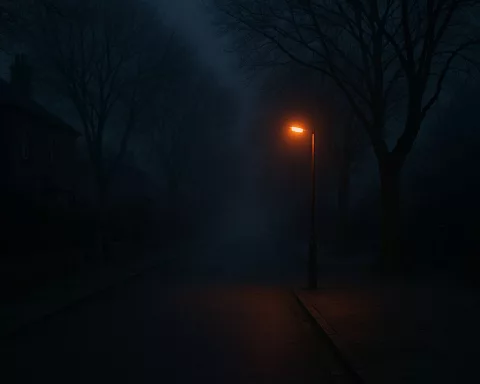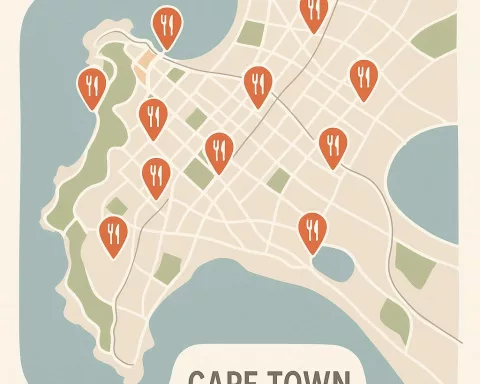On April 8, 2025, a shocking shooting tore through Wynberg Magistrate’s Court in Cape Town, killing Dingalomoya Cintso in a violent gang attack. The murder exposed serious security failings and deep gang rivalries that threaten the city’s safety. Authorities quickly arrested several suspects, including a woman believed to have planned the attack as revenge in a deadly gang feud. This tragic event shook the community and revealed how fragile justice can be when crime strikes where it should never reach. The court now stands as a powerful symbol of both hope and the ongoing battle against violence.
What happened during the Wynberg Magistrate’s Court shooting in Cape Town?
On April 8, 2025, Dingalomoya Cintso was fatally shot inside Wynberg Magistrate’s Court in a gang-related attack linked to a deadly feud between Cape Town gangs. The incident exposed security flaws and led to multiple arrests, highlighting ongoing violence and challenges in the city’s justice system.
A Day of Routine Broken by Violence
April 8, 2025, began just like any other day in Cape Town’s southern suburbs. The Wynberg Magistrate’s Court bustled with activity as lawyers, court officials, and ordinary citizens moved through its halls, each focused on their own business. This courthouse, a familiar landmark, had long symbolized the pursuit of justice and the hope of redemption. Yet, for all its history, nothing could prepare those inside for the dramatic events that would soon unfold, shattering any illusion of safety.
Dingalomoya Cintso, aged 50, arrived at the court that morning. As a taxi owner from Vrygrond, he faced serious accusations: murder and attempted murder, tied to an ongoing extortion investigation in Muizenberg. Moments before tragedy struck, Cintso met with his lawyer—an ordinary legal ritual that felt routine in a place built for such encounters. Suddenly, the atmosphere shifted in an instant. Reports describe how a gunman walked through the entrance, undetected due to a dormant metal detector, and unleashed a hail of gunfire.
Four bullets struck Cintso in the head, ending his life in the very building meant to uphold law and order. Panic surged through the courtrooms. Sirens echoed as emergency teams rushed to the scene, their urgency underscoring the gravity of the attack. The incident not only stunned those present but also rippled across Cape Town, reviving memories of violent clashes and exposing vulnerabilities within the justice system itself.
Cape Town’s Gangland: Echoes of Power and Retaliation
Initial reports suggested Cintso might have been assisting the state, but officials at the National Prosecuting Authority quickly clarified that he stood as an accused, not a witness. Cintso’s name had circulated for years among those familiar with Cape Town’s gang conflicts, particularly in Vrygrond, where disputes over territory often end in bloodshed. The style and swiftness of the killing led investigators and journalists to suspect a calculated act of vengeance.
Police connected the murder to the turbulent aftermath of Ashley “Essie” Phillips’ death. Phillips, a notorious figure and leader of the Junky Funky Kids gang, had himself been shot and killed just months earlier at a police station in Brackenfell. Phillips’ prominence in Cape Town’s criminal underworld meant his murder sent shockwaves through rival factions, heightening an already volatile atmosphere. The slaying of Cintso bore the hallmarks of a revenge killing—an act designed to settle scores and send a message to others who might challenge the gang’s dominance.
The investigation gained momentum almost immediately, signifying the authorities’ determination to respond. On April 13, just five days after Cintso’s death, Western Cape detectives arrested a 35-year-old woman. Media reports identified her as the girlfriend of a Junky Funky Kids leader, and sources suggested her involvement went beyond mere association. Her arrest highlighted the blurred lines between personal relationships and gang loyalty—a theme woven into the city’s ongoing struggle with organized crime.
The State Strikes Back: Security and Symbolism
Authorities wasted no time in reassuring a shaken public. Western Cape Deputy Police Commissioner Major General Bongani Maqashalala addressed the media, backed by a visible police presence. His appearance conveyed both authority and urgency, signaling the state’s intent to reclaim control and restore order. The days that followed saw a dramatic tightening of security at Wynberg Magistrate’s Court. Suddenly, the once-quiet corridors thrummed with the presence of armed officers, and metal detectors—ignored before—became impossible to bypass.
Advocate Doc Mashabane, the Justice Department’s Director-General, visited the courthouse, ordering tighter access controls and more rigorous screening of court staff. These steps reflected a broader push to restore faith in the justice system’s ability to protect both its officials and the public. The renewed emphasis on security echoed the architectural ethos of the courthouse: rational, methodical, designed to impose order in a world that often resists it.
Yet, the complexity of the situation soon became apparent. On April 24, police announced two more arrests, raising the total number of suspects to four. Sergeant Wesley Twigg, speaking for the police, promised that investigators would pursue every lead and bring all perpetrators to justice. The unfolding investigation suggested an intricate network of conspirators, drawing in unlikely participants and complicating any simple narrative of guilt and innocence. Each new detail painted a picture of a society where crime, law, and everyday life overlap in unpredictable ways.
A Community Confronts Its Reality
The murder of Cintso within the courthouse did more than spark outrage; it forced Cape Town to confront long-standing challenges. For decades, the city has battled entrenched gang networks that trace their origins back to the infamous Number Gangs of the apartheid era. These criminal organizations, rooted in prison life and fueled by socioeconomic hardship, exert influence over neighborhoods like Vrygrond and Lavender Hill. Their presence shapes the experiences of countless young people and undermines efforts to build safer, more cohesive communities.
The Junky Funky Kids, the gang implicated in this latest killing, have become both feared and infamous. The slaying of Ashley Phillips marked a watershed moment, escalating conflicts and highlighting the difficulties facing law enforcement. The courthouse attack brought these issues into sharp relief, prompting condemnation from government officials. Anroux Marais, the Western Cape’s MEC for Police Oversight and Community Safety, criticized the lapses that allowed a weapon into what should have been a secure environment. Her statements echoed the frustrations of many South Africans, who have watched for years as the proliferation of illegal firearms fuels wave after wave of violence.
Inside the courthouse, the atmosphere shifted. Court officials underwent stricter vetting, and heightened security measures became the new normal. The building itself—its design, its routines, its very sense of purpose—stood as both a testament to the ideals of justice and a reminder of how fragile those ideals can be when confronted with organized brutality.
The Mastermind and the Machinations of Power
Central to the unfolding drama stands Shireen Matthews, the 35-year-old woman whom police described as the “mastermind” behind Cintso’s murder. Official statements painted her as a figure who wielded significant influence within the gang hierarchy. Prosecutors alleged that Matthews orchestrated the courthouse shooting as direct retaliation for the killing of Ashley Phillips. Her role underscored the complex dynamics of leadership and loyalty within Cape Town’s criminal underworld, where women increasingly play pivotal roles in operations once dominated by men.
Matthews’ court appearances quickly became a local spectacle. Crowds gathered outside, some seeking answers, others drawn by the notoriety of the case. The state charged her with premeditated murder, classifying the offense as a Schedule 6 crime—the most serious category in South African law. Investigators hinted that further arrests could follow as they pieced together the events and motives leading up to the shooting. The proceedings transformed the court into a stage, where the line between public justice and private vendetta blurred.
This case, with its high-profile suspects and intricate web of motives, highlighted the enduring challenge of holding powerful criminal figures accountable. Each new arrest and revelation expanded the cast of characters, demonstrating the far-reaching influence of gangs on Cape Town’s everyday life.
Searching for Justice Amid Uncertainty
The Wynberg shooting forced the community and the justice system alike to reckon with uncomfortable truths. The attack exposed vulnerabilities in security procedures and reminded citizens that even spaces designed to be sanctuaries can fall victim to violence. For many, the incident shattered any lingering sense of safety, underscoring the need for both vigilance and reform.
The case remains ongoing. Police continue their investigation, determined to track down every individual involved. Meanwhile, the Wynberg Magistrate’s Court stands as a symbol—at once a fortress and a target, embodying both the promise and the limitations of justice in a society marked by inequality and organized crime.
Every new development in the case draws public attention, as Capetonians grapple with questions of justice, retribution, and the future of their city. The murder of Dingalomoya Cintso, carried out with chilling precision, serves as a stark reminder: the struggle to uphold the rule of law never ends, and the boundaries between order and chaos remain perilously thin.
What happened during the Wynberg Magistrate’s Court shooting in Cape Town?
On April 8, 2025, Dingalomoya Cintso was fatally shot inside Wynberg Magistrate’s Court in Cape Town during a violent gang-related attack. The gunman entered the courthouse undetected due to dormant security measures and fired multiple shots, killing Cintso, who was facing serious criminal charges related to murder and attempted murder. The attack exposed serious security failings at the court and highlighted the ongoing challenges posed by gang violence in the city. Several suspects were quickly arrested in connection with the incident.
Who was Dingalomoya Cintso and why was he targeted?
Dingalomoya Cintso, aged 50, was a taxi owner from Vrygrond who was facing charges of murder and attempted murder tied to an extortion investigation in Muizenberg. Though some early speculation suggested he might have been assisting the state, authorities confirmed he was an accused individual. His murder is believed to be a calculated act of revenge linked to a deadly gang feud, particularly in the context of the recent killing of Ashley “Essie” Phillips, a notorious gang leader. Cintso’s death reflects the violent power struggles between rival gangs in Cape Town.
What role did gangs play in this attack?
Gangs played a central role in the Wynberg courthouse shooting. The incident is connected to a bloody feud following the murder of Ashley Phillips, leader of the Junky Funky Kids gang. Police arrested several suspects tied to this gang, including Shireen Matthews, a woman described as the mastermind behind the attack and believed to have orchestrated it as retaliation. The event underscores the deep-rooted influence of gangs like the Junky Funky Kids in Cape Town’s criminal landscape and their capacity to carry out violent reprisals even within supposedly secure environments.
How have authorities responded to the shooting and security failures?
In response, Western Cape law enforcement rapidly increased security at Wynberg Magistrate’s Court, installing functioning metal detectors, implementing tighter access controls, and increasing armed police presence. The Justice Department ordered stricter vetting of court staff and enhanced screening measures. Officials, including Western Cape Deputy Police Commissioner Major General Bongani Maqashalala and MEC Anroux Marais, publicly condemned the security lapses and vowed comprehensive investigations to bring all perpetrators to justice. The shooting prompted a broader reassessment of courthouse security protocols citywide.
Who is Shireen Matthews and what charges does she face?
Shireen Matthews, aged 35, was arrested five days after the shooting and is considered the “mastermind” behind the attack. She is the girlfriend of a Junky Funky Kids gang leader and is alleged to have orchestrated the assassination of Dingalomoya Cintso as a calculated act of revenge. Matthews faces charges of premeditated murder, classified as a Schedule 6 crime—the most serious category under South African law. Her arrest shines light on the evolving roles women play within gang hierarchies and the complex networks involved in organized crime.
What does the Wynberg court shooting mean for Cape Town’s fight against gang violence?
The shooting exposed the fragility of justice when confronted by organized, violent crime and highlighted critical weaknesses in public security measures. It has galvanized public attention on the gang-related violence that continues to plague Cape Town, especially in neighborhoods like Vrygrond and Lavender Hill. The incident serves as a stark reminder of the ongoing struggle to balance law enforcement, community safety, and systemic reform. While the investigation continues, the Wynberg Magistrate’s Court now stands as both a symbol of resilience and a cautionary tale about the challenges of upholding justice amid deep-rooted criminal networks.












